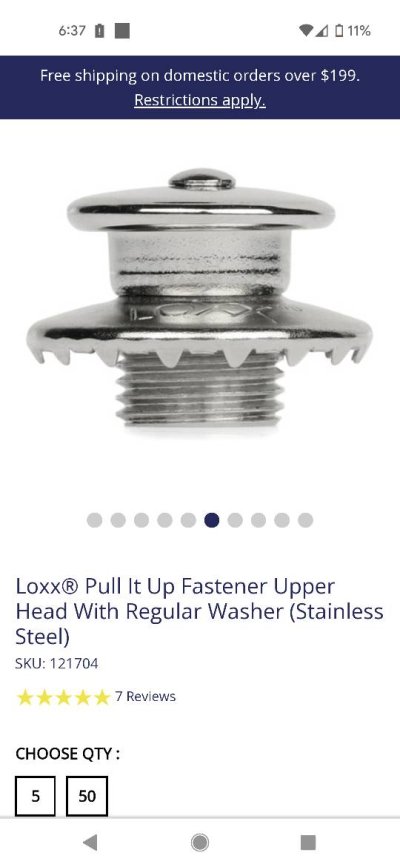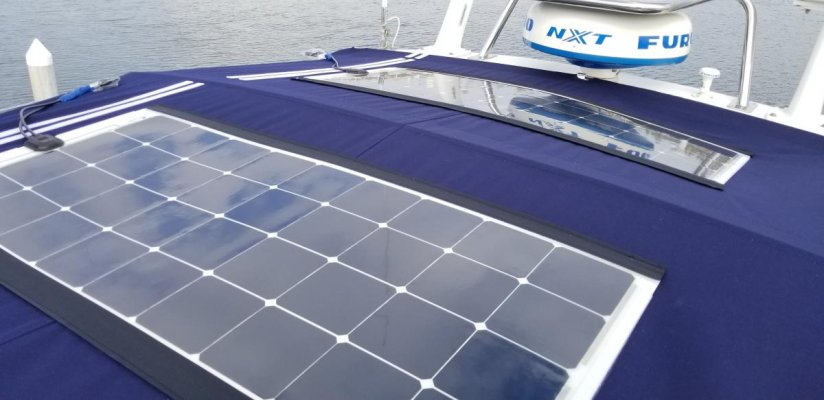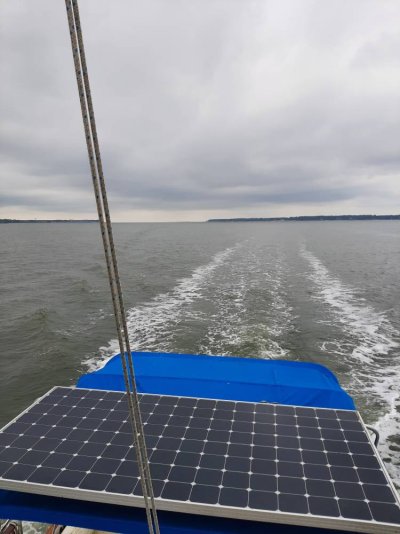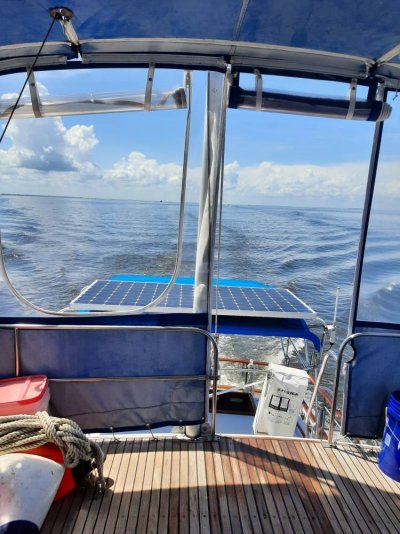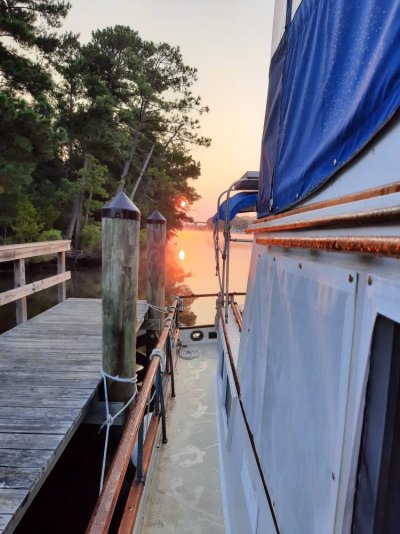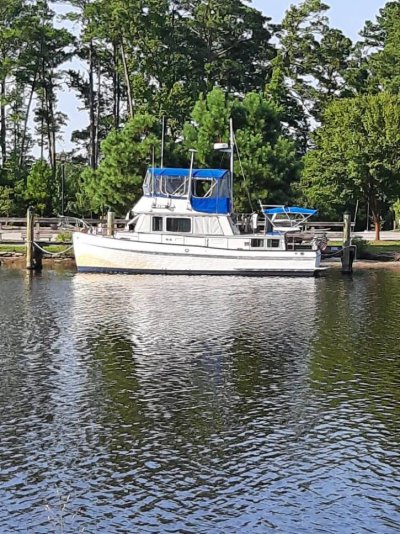PocketAces
Veteran Member
- Joined
- Dec 25, 2019
- Messages
- 45
- Location
- Canada
- Vessel Name
- Pocket Aces
- Vessel Make
- Mainship 34T '08
Hi,
Looking to install 4X100 or 6X100W Armada flexible solar panels on my bimini (for Mainship34T, 2008). Those that know this boat know that the flybridge has extra width and so I can set up a 3X2 array with 3X2 series/parallel.
Looking at ways to mount this setup. The easy low cost option seems to be rare earth magnets, but the risk factor in strong winds is a major draw back.
Talking to a canvas shop, the fellow there said the only real way to go is to cover the entire bimini with a second layer of sunbrella. This second layer is attached to the actual bimini top using zippers where the bimini wraps around to connect to the windows. The entire bimini (except for the edges) does not have any added sewing.
The solar panels are then zippered onto the second layer. His rationale for doing this is as follows:
* He scoffed at the idea of using rare earth magnets. Too unreliable and chafing.
* Sewing zippers directly onto the bimini will result in leakage from the seams. (Lots of rain in Vancouver, BC). They will also overstress the bimini fabric.
* Using a small second layer with Panels sewed onto that will result in lots of mould/green stuff over winter.
* The end result is a bimini/solar panel top which is very robust.
So his solution sounds good but is expensive at around Cdn$2,500 which is more than double the cost of the actual solar panels. I am also a bit skeptical since my current bimini already has multiple seams and joins which don't leak through the stitching.
I really don't like the idea of mounting rigid solar panels to hand rails or trying to set up a rigid solar panel arrangement.
Does anyone have experience sewing solar panels directly to a bimini with zippers. Any other suggestions.
On a related topic: I plan to connect the panels to the Bridge Main bus below the flybridge helm. It is much easier to install and the voltage drop from solar to battery via the flybridge helm should be less than taking a 10 gauge wire all the way down to the batteries. (4 Golf carts). I don't know what the gauge for the cable to the fly bridge bus is, but it is as fat as my little finger. Have others tried this?
Thanks
Looking to install 4X100 or 6X100W Armada flexible solar panels on my bimini (for Mainship34T, 2008). Those that know this boat know that the flybridge has extra width and so I can set up a 3X2 array with 3X2 series/parallel.
Looking at ways to mount this setup. The easy low cost option seems to be rare earth magnets, but the risk factor in strong winds is a major draw back.
Talking to a canvas shop, the fellow there said the only real way to go is to cover the entire bimini with a second layer of sunbrella. This second layer is attached to the actual bimini top using zippers where the bimini wraps around to connect to the windows. The entire bimini (except for the edges) does not have any added sewing.
The solar panels are then zippered onto the second layer. His rationale for doing this is as follows:
* He scoffed at the idea of using rare earth magnets. Too unreliable and chafing.
* Sewing zippers directly onto the bimini will result in leakage from the seams. (Lots of rain in Vancouver, BC). They will also overstress the bimini fabric.
* Using a small second layer with Panels sewed onto that will result in lots of mould/green stuff over winter.
* The end result is a bimini/solar panel top which is very robust.
So his solution sounds good but is expensive at around Cdn$2,500 which is more than double the cost of the actual solar panels. I am also a bit skeptical since my current bimini already has multiple seams and joins which don't leak through the stitching.
I really don't like the idea of mounting rigid solar panels to hand rails or trying to set up a rigid solar panel arrangement.
Does anyone have experience sewing solar panels directly to a bimini with zippers. Any other suggestions.
On a related topic: I plan to connect the panels to the Bridge Main bus below the flybridge helm. It is much easier to install and the voltage drop from solar to battery via the flybridge helm should be less than taking a 10 gauge wire all the way down to the batteries. (4 Golf carts). I don't know what the gauge for the cable to the fly bridge bus is, but it is as fat as my little finger. Have others tried this?
Thanks

